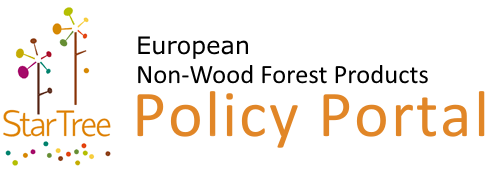Non-timber forest products (NTFP) survey sub-sector analysis (SSA) in Montenegro
Description
Brief description of the instrument and its modus operandi
It was a project-survey on non-timber forest products (NTFPs) in Montenegro, including all important subjects involved in the value chain (collectors, middlemen, NTFP processors and exporters). // The survey was carried out in two segments; (1) the survey of households in the northern municipalities on a pre-determined representative sample and was focused on three groups that may had been a part of the NTFP value chain – private forest owners, collectors and middlemen; and (2) the survey of processing companies that process and export NTFP – individual meetings and discussions with major NTFPs processors in Montenegro. // Engaging the NTPF value chain as a whole is a critical factor to the further improvement and development of this sector. Thus, this project has involved all necessary actors: Private Forest Owners (PFOs), collectors of NTPFs, middlemen (or suppliers) and NTPFs processors and exporters. In order to meet the objectives of this analysis, the ISSP conducted a quantitative survey about PFOs, collectors and middlemen in the NTFP process. The survey was directed at 500 households from the northern municipalities, which includes 1,980 individuals (household members). The survey results provided information on PFOs and the engagement of households in NTPFs. A qualitative analysis was conducted among NTFPs processors and exporters in northern Montenegro. This analysis is based on set of individual interviews with NTFPs processors and one focus group session involving all NTPF processors who were previously interviewed. The interviews and the focus group were conducted using a single standardized questionnaire. The NTPFs processors greatly contributed to the process in helping understand the current problems, challenges and overall state of the sector.
Which problem the instrument is supposed to solve?
The NTFP sector in Montenegro is still undeveloped but considering the wealth of NTFP natural resources, especially mushrooms, wild fruits and medicinal plants, it has great potential. // Gathering information and data is necessary to create a sound analysis of the development of the non-timber forestry sector, and to subsequently design a detailed intervention programme that has appropriate objectives, a well-targeted set of indicators, and sound monitoring.
Purpose or main objective / overall goal of the instrument?
The main goal was to set a basis – status quo and potentials – for (governmental) programmes that would foster growth of NWFP’s sector. The objectives of this sub-sector analysis are; (1) to obtain relevant data on actors, factor, interactions and relationships in the sustainable exploitation of NTFP in the study area, and with a specific social focus on the dimensions of poverty and social inclusion; (2) to establish facts about the relative importance of various NTFPs in household economies (possibly by categorising households by level of income/set of NTFPs); (3) to identify organisational and institutional issues affecting NTFP collection; (4) to make relevant recommendations for an SNV programme of interventions, including objectives, main activities, possible results and indicators for measuring success.
Innovation content or potential of the instrument?
To Improve knowledge on performance of the NWFP sector in the region.
Which laws and regulations support the implement of this instrument?
Not applicable.
The initiator/promoter of the instrument?
SVN Netherlands Development Organisation[1]
Which organizations are involved in the operationalization of the instrument?
Project partners: a) INSTITUTE FOR STRATEGIC STUDIES AND PROGNOSES (ISSP) (Montenegro), b) SVN Netherlands Development Organisation (Netherlands).
How the monitoring is ensured?
This is a one-time sectorial survey - not applicable in this case.
How the compliance is ensured?
This is a one-time sectorial survey - not applicable in this case.
How is the overall performance of the instrument?
This is a one-time sectorial survey - not applicable in this case.
References
Link to the report of the survey: http://www.isspm.org/projects/sectorial-policies/
Brief description of the context for the emergence of the instrument
SVN shares specialists with expertise in agriculture, renewable energy, and water, sanitation & hygiene to cooperate with local partners to provide communities, businesses and organisations with the tools, knowledge and connections they need to increase incomes and gain access to basic services. Montenegro is rich in natural ecosystems and potential of NEFP. Nevertheless, sector of NWFP is underdeveloped and given the potential relatively inefficient. Cross-section survey of the sector did pinpoint gaps and weaknesses of the system and highlight the opportunities for development. Such information provides insights for local communities or regional/national government to shape instruments for development of the sector
Have any of the items mentioned above changed since the instrument entered into force?
No
Details
(No such information is available.)
What are the main reasons or drivers behind changes mentioned?
Not applicable.
Is there any qualitative or quantitative study of the impacts of the instrument?
Yes, please specify
Details
Link to the report of the survey: http://www.isspm.org/projects/sectorial-policies/
| Instrument | |
| Year | 2008. |
|---|---|
| Products | Mushrooms/truffles, Herbs/plants, Fruits |
| Countries | Slovenia |
| Regions (NUTS 2) | Western Slovenia |
| Geographical scope | Regional |
